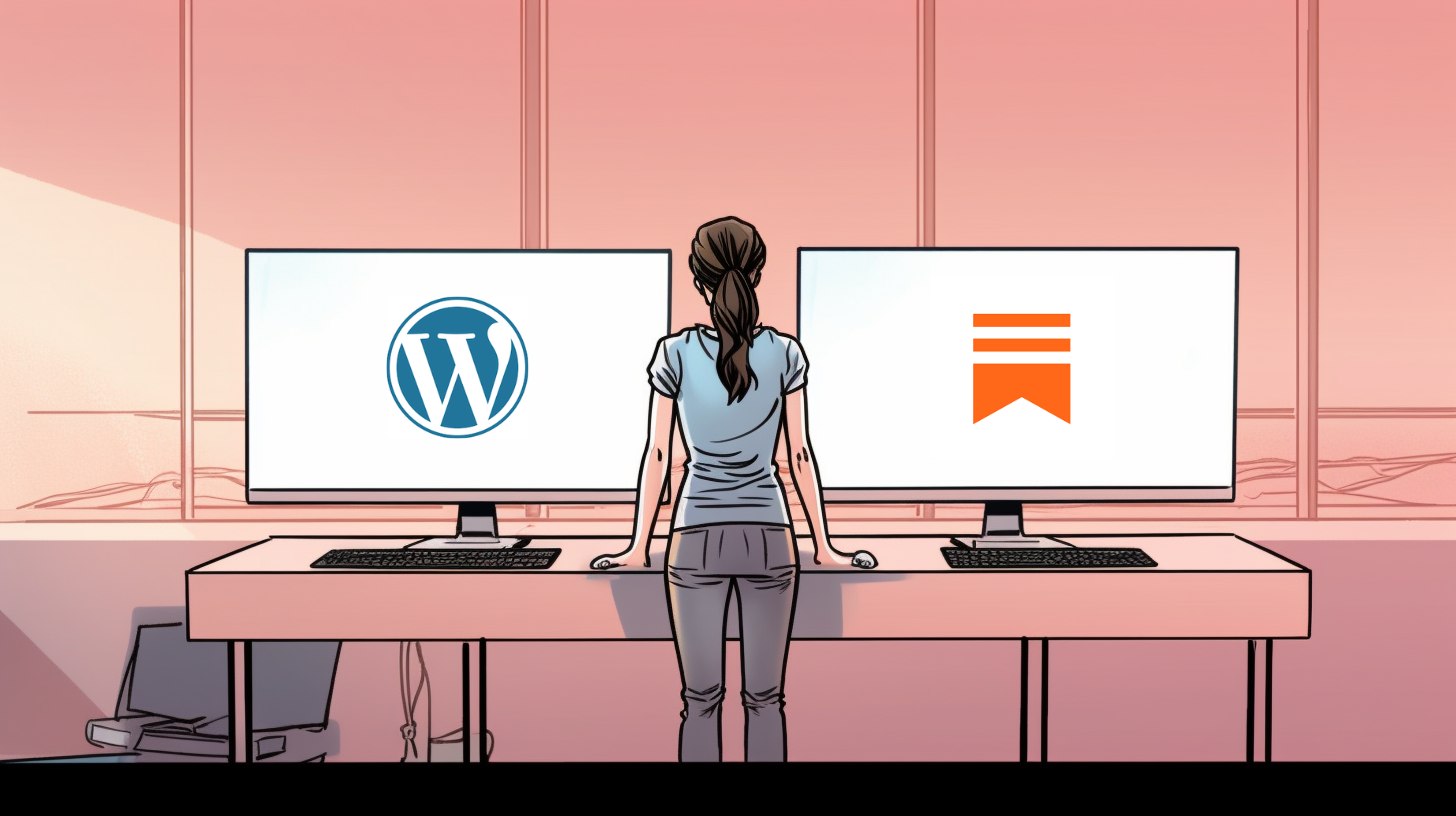
When to migrate from Substack to WordPress
Substack is a fully hosted platform that lets someone with practically zero technical know-how sign up and start earning a living from their writing. It has been somewhat of a cultural phenomenon for anyone who follows the media space.
One of the challenging concepts for someone like me to reconcile with Substack, is like with any hosted platform, you’re forfeiting a large amount of control and ownership in your livelihood. This is in contrast to The Code Company’s philosophy of using open source software like WordPress to power your digital products.
But the immense simplicity of Substack is what makes it so popular, and for the vast majority of its users, it’s the ideal product for their needs. With no up-front costs, and a revenue share model (currently 10%), it’s a pretty good value proposition for most.
I spoke last year at WordCamp US – the largest WordPress conference – about the challenges WordPress has to solve to make it more creator-friendly. If the WordPress project was ever going to compete with simple SaaS tools like Substack, there’s a long way to go.
The Code Company founder Ben May speaking at WordCamp US 2022 ‘Where is WordPress’ Place in the Website Creator Economy?’
Common reasons to migrate from Substack to WordPress
There are a few central motivations that could lead someone to move away from a SaaS product.
- Cost saving: Reducing the amount of revenue you have to share with a platform.
- Bespoke functionality: Platforms inevitably are more one-size-fits all.
- Advanced acquisition & reporting: Platforms like Substack are limited in how you acquire subscribers and the data you can collect.
Leaving Substack to save costs
For most people, leaving Substack will not result in saving money in the long term.
While the concept of an unlimited rev-share feels daunting or unfair, the reality is that for the average writer, the tools provided by Substack would cost much more if created custom by an agency or freelancer.
For a moderately successful writer on Substack who might be grossing $100,000 per year, they’re paying Substack $10,000 in fees. In contrast, the cost of developing a WordPress (or other bespoke) site and having comparable features is rarely going to be less than six figures.
For a more successful venture on Substack – say, doing $1,000,000 in gross subscription revenue – that equates to $100,000 in fees every year.
The hidden costs of migrating away from Substack
There’s no denying that, when looking purely at the transactional costs for subscriptions, migrating away from Substack can result in cost savings for successful creators. But what’s often overlooked is that you’re now responsible for many functions that many people don’t have either the time, expertise or budget to outsource.
Below are some of the most common benefits a writer is getting with Substack that they’re potentially not considering when evaluating the costs:
Product Development
Product development is the name given to the process of devising features for your site, along with the engineering needed to create them. This can include anything from optimising the images for email clients, to adding a new reply button on the comment section.
While using Substack, users benefit from Substack’s inhouse team of product managers, software engineers, testers and more. These roles are aligned with Substack’s own corporate goals, and any individual customer. This is always a risk to manage as you don’t have any say in feature development.
When building your own publishing stack, development of features can rarely be outsourced entirely, as it requires people with intimate internal knowledge of the business to shape and define features goals and use cases.
Product development time can be easy to de-prioritise, which can result in engineers lacking clear directions, an inconsistent product roadmap, and ultimately an inefficient use of resources.
Having a dedicated resource to manage product development, or even ensuring it’s a clear part of someone’s role, will result in more targeted features that can either help grow & retain subscribers or unlock new revenue streams.
Subscriber Acquisition
Substack has a number of built-in features that help writers acquire new subscribers. Whether or not you think the current features are effective, the fact remains that Substack is actively managing and constantly thinking of new ways to build its acquisition function.. It shouldn’t be underestimated the amount of work that is required to fully manage this process in-house.
There are clear benefits to taking full control of subscriber acquisition yourself, including greater control over the audiences you target, and increasing the chances of acquiring higher quality subscribers. However at a small scale, and if ignored, it could have a significant impact on the growth of a subscription business.
Ongoing Maintenance
Part of the expense of moving from a SaaS product to a custom solution is the ongoing cost. Constantly maintaining and updating your technology is the only way to ensure it works well in the long term and your investment is protected. For technical products, it’s ensuring things like security, external APIs, constantly-changing SEO requirements and innumerable other factors are kept in line. Going with a SaaS platform means those ongoing maintenance costs along with operational costs such as hosting, CDNs and ESPs are all taken care of.
When do you move away from Substack to WordPress?
There’s fundamentally three criteria to consider for a move from Substack to WordPress:
- Does your business really need the custom functionality that only an open source solution can provide?
- Are you generating so much subscription revenue that Substack’s product doesn’t justify its yearly cut?
- Are you comfortable with the product obligations you are taking on, and will you make the time required to make it work?
For Substackers who meet the above criteria and truly want to grow from a “Substack” to a “Media Company”, migrating from Substack to WordPress is a no-brainer.
For the vast majority, Substack is an ideal home. For the few willing to make the commitment of serious time and resources, migrating to WordPress and going to the next step is a challenging but worthwhile endeavour.
Having been involved in some of the most complex Subtack to WordPress migrations, we’re happy to talk about how The Code Company can be your partner in that journey.

